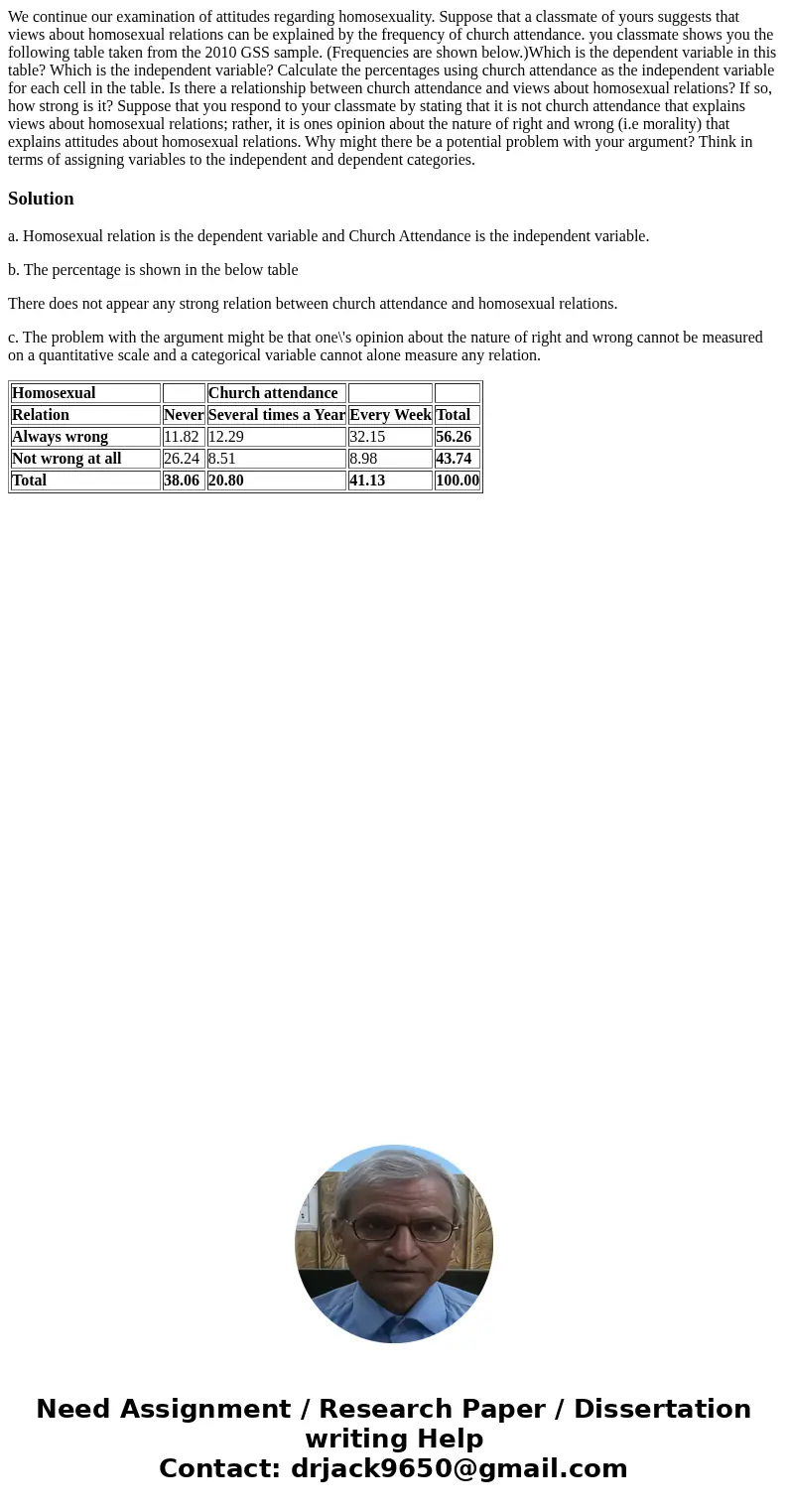We continue our examination of attitudes regarding homosexua
We continue our examination of attitudes regarding homosexuality. Suppose that a classmate of yours suggests that views about homosexual relations can be explained by the frequency of church attendance. you classmate shows you the following table taken from the 2010 GSS sample. (Frequencies are shown below.)Which is the dependent variable in this table? Which is the independent variable? Calculate the percentages using church attendance as the independent variable for each cell in the table. Is there a relationship between church attendance and views about homosexual relations? If so, how strong is it? Suppose that you respond to your classmate by stating that it is not church attendance that explains views about homosexual relations; rather, it is ones opinion about the nature of right and wrong (i.e morality) that explains attitudes about homosexual relations. Why might there be a potential problem with your argument? Think in terms of assigning variables to the independent and dependent categories.

Solution
a. Homosexual relation is the dependent variable and Church Attendance is the independent variable.
b. The percentage is shown in the below table
There does not appear any strong relation between church attendance and homosexual relations.
c. The problem with the argument might be that one\'s opinion about the nature of right and wrong cannot be measured on a quantitative scale and a categorical variable cannot alone measure any relation.
| Homosexual | Church attendance | |||
| Relation | Never | Several times a Year | Every Week | Total |
| Always wrong | 11.82 | 12.29 | 32.15 | 56.26 |
| Not wrong at all | 26.24 | 8.51 | 8.98 | 43.74 |
| Total | 38.06 | 20.80 | 41.13 | 100.00 |

 Homework Sourse
Homework Sourse